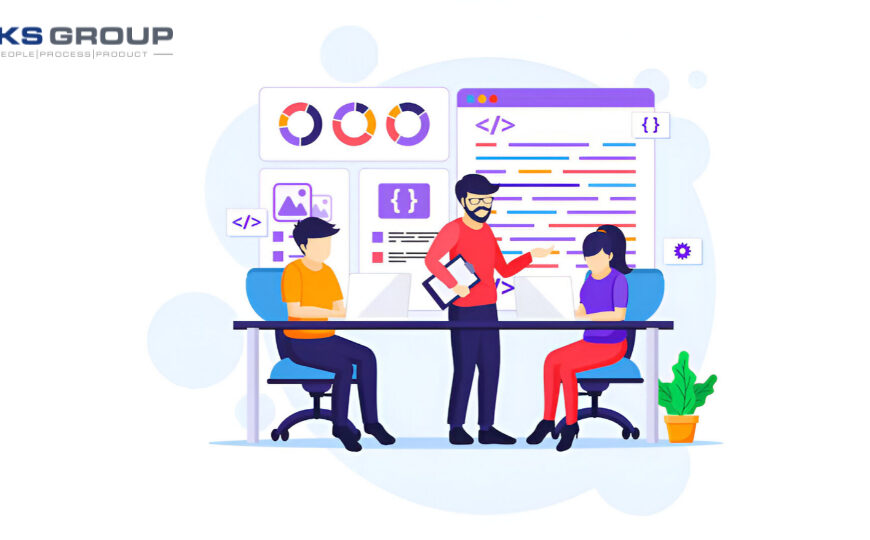Recruitment has evolved far beyond posting job ads and hoping for the best. In today’s competitive talent market, successful hiring strategies rely on data-driven decision-making. This is where data analytics in recruitment steps in, transforming traditional hiring into a precise, efficient, and result-oriented process.
Whether you’re an HR leader, talent acquisition specialist, or business owner, understanding how to use data analytics to improve recruitment outcomes can give you a substantial edge. In this comprehensive guide, we’ll break down the power of recruitment analytics, key metrics to track, and actionable steps to leverage data for better hiring decisions.
What Is Recruitment Data Analytics?
Recruitment data analytics involves collecting, analyzing, and interpreting data related to hiring and talent acquisition. The goal? To identify patterns, measure performance, and forecast hiring needs to optimize recruitment strategies.
It enables recruiters and hiring managers to make smarter decisions by leveraging metrics such as:
- Time to hire
- Cost per hire
- Candidate quality
- Source of hire
- Applicant conversion rates
Instead of relying solely on intuition, data analytics offers evidence-based insights that improve every stage of the hiring process — from sourcing to onboarding.
Why Is Data Analytics Important in Recruitment?
- Improves Hiring Efficiency
By analyzing hiring metrics, companies can pinpoint bottlenecks in the recruitment funnel. For example, if the average time to hire is 45 days, but competitors are hiring in 30, analytics can help identify and fix the lag. - Enhances Candidate Quality
Data helps in evaluating which sourcing channels deliver the most qualified candidates, enabling recruiters to focus efforts where they matter most. - Reduces Hiring Costs
Recruitment analytics reveal which strategies provide the best return on investment (ROI), allowing companies to cut unnecessary expenses and optimize recruitment budgets. - Supports Strategic Workforce Planning
With predictive analytics, organizations can forecast future hiring needs and plan accordingly, avoiding talent shortages or over-hiring. - Promotes Diversity and Inclusion
Data helps in tracking diversity metrics across the hiring pipeline, ensuring fair and unbiased hiring practices.
Key Recruitment Metrics You Should Track
To leverage data analytics effectively, it’s essential to track key recruitment metrics. Here are the most impactful ones:
1. Time to Fill vs. Time to Hire
- Time to Fill: The number of days between job posting and candidate acceptance.
- Time to Hire: The number of days between candidate application and acceptance.
These metrics help in understanding recruitment speed and efficiency.
2. Cost Per Hire
This calculates the total cost involved in hiring a new employee, including advertising, recruiter salaries, agency fees, and onboarding expenses.
Formula:
Total Recruitment Cost / Number of Hires
3. Source of Hire
Identify which recruitment channels (job boards, social media, referrals, career pages) deliver the highest quality candidates.
4. Application Drop-Off Rate
Tracks the percentage of candidates who abandon the application process midway. High rates indicate a need for a more streamlined application experience.
5. Offer Acceptance Rate
Measures how many job offers are accepted versus rejected. Low acceptance may indicate compensation issues, poor candidate experience, or better offers from competitors.
6. Quality of Hire
Assessed by performance, retention rate, and feedback after 3, 6, or 12 months. It reflects the long-term value of your hiring decisions.
How to Use Data Analytics to Improve Recruitment Outcomes
Let’s walk through step-by-step strategies to leverage recruitment data analytics effectively.
1. Centralize Recruitment Data Collection
Start by integrating data sources. Use Applicant Tracking Systems (ATS), HR software, and CRM tools to gather all hiring-related data in one place. Centralizing data allows for more accurate and comprehensive analysis.
Pro Tip: Use platforms like Greenhouse, Lever, or BambooHR to streamline data collection.
2. Leverage Predictive Analytics
Predictive analytics uses historical data to forecast future outcomes. For recruitment, it can help predict:
- Future hiring needs
- Potential candidate success
- Likelihood of employee turnover
Example: If data shows that candidates with certain certifications perform better, recruiters can prioritize such profiles.
Tools to Use: LinkedIn Talent Insights, Google Cloud Talent Solution, IBM Watson Analytics
3. Optimize Sourcing Channels
By tracking the source of hire and conversion rates, you can identify which platforms yield the best results. Invest more in high-performing channels and reconsider underperforming ones.
Example:
- LinkedIn may yield high-quality hires but at a higher cost.
- Employee referrals might offer better ROI with lower time to hire.
4. Refine Job Descriptions Using Data
Use analytics to test different job descriptions. A/B testing can reveal what job titles, formats, or keywords attract better candidates. Use data to craft SEO-optimized and inclusive job descriptions.
Tools: Textio, Jobscan, Grammarly Business
5. Monitor Candidate Experience Metrics
Track:
- Application drop-off rates
- Interview scheduling time
- Feedback turnaround time
Use surveys and feedback tools to measure Candidate Net Promoter Score (cNPS). A positive experience can increase offer acceptance rates and employer brand reputation.
6. Benchmark Against Industry Standards
Compare your recruitment metrics with industry benchmarks. This helps in understanding where your process lags or leads and offers a competitive advantage.
Example: If your time to hire is significantly higher than average, it may indicate inefficiencies in your interview process.
7. Use Dashboards for Real-Time Insights
Visualize recruitment data with dashboards for quicker decision-making. Dashboards allow hiring managers to view KPIs in real-time and adjust strategies instantly.
Best Tools: Power BI, Tableau, Google Data Studio
Case Study: How Company X Reduced Time to Hire by 30% with Data Analytics
Company X, a tech firm, struggled with a 60-day time to hire. Using data analytics, they discovered:
- Candidates spent 14 days waiting for interview scheduling.
- The career page had a 40% drop-off rate.
Actions Taken:
- Implemented automated interview scheduling.
- Redesigned the career page for mobile optimization.
- Prioritized top-performing sourcing channels.
Result: Time to hire reduced from 60 to 42 days within 3 months, improving candidate experience and reducing hiring costs.
Common Challenges in Recruitment Analytics (And How to Overcome Them)
- Data Silos
Disparate systems lead to fragmented data. Solution: Use integrated HR platforms or data warehouses. - Lack of Data Literacy
Recruiters may lack the skills to interpret data. Solution: Offer data training for HR teams or collaborate with data analysts. - Privacy and Compliance Issues
Ensure data privacy laws (like GDPR) are followed. Solution: Use compliant tools and limit access to sensitive data.
Future Trends in Recruitment Data Analytics
- AI and Machine Learning: Automating candidate screening and matching.
- Real-Time Analytics: Instant access to performance metrics.
- Predictive Retention Modeling: Anticipating employee turnover risks before they happen.
- Diversity Analytics: Enhanced tracking of DEI initiatives across hiring.
Final Thoughts
Recruitment is no longer a guessing game. Data analytics empowers recruiters to make informed, precise, and impactful hiring decisions that drive business success. From reducing time to hire and lowering costs to enhancing candidate quality, data-driven recruitment is the future.
Start small — track key metrics, use simple dashboards, and iterate. Over time, you’ll gain deep insights that transform your recruitment process into a well-oiled, results-driven machine.













